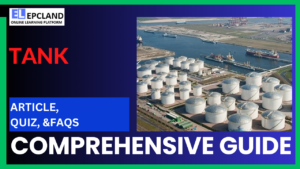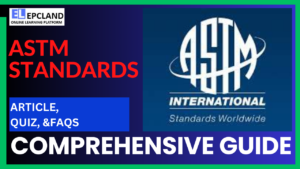Introduction
HDPE pipes, short for High-Density Polyethylene pipes, have gained significant traction in various industries due to their exceptional durability, versatility, and eco-friendly nature. Among the many factors that make HDPE pipes a popular choice, the Pressure Number (PN) stands out. In this guide, we will delve into the world of HDPE pipes and PN, exploring their characteristics, applications, pressure ratings, and answering some frequently asked questions.
Table of Contents
HDPE Pipes and PN: Understanding the Basics
HDPE Pipes and PN are closely intertwined in the world of fluid transportation and distribution. The “PN” refers to the Pressure Number, a classification system used to denote the pressure rating of a pipe. This rating indicates the maximum pressure that a pipe can handle safely. HDPE pipes, on the other hand, are made from high-density polyethylene material, known for its durability and flexibility.
Don’t miss the Complete Course on Piping Engineering: Check Now
By EPCLand.com
Applications of HDPE Pipes and PN
HDPE pipes find their utility in a wide range of applications, owing to their remarkable properties. Some of the common applications include:
- Water Supply: HDPE pipes are extensively used for water distribution due to their corrosion resistance and leak-proof nature.
- Gas Distribution: The flexibility and durability of HDPE pipes make them ideal for gas distribution networks.
- Agriculture: These pipes are used in irrigation systems, providing an efficient means of water transportation to farms.
- Mining: HDPE pipes are used for transporting slurry and other materials in mining operations.
- Industrial Processes: They play a crucial role in industrial processes that involve the transportation of chemicals, acids, and other fluids.
Understanding Pressure Ratings (PN) for HDPE Pipes
Pressure Number (PN) is a significant aspect when it comes to HDPE pipes. It defines the maximum pressure that a pipe can withstand without compromising its structural integrity. The PN is typically accompanied by a numerical value, indicating the pressure rating in bars. The higher the PN value, the higher the pressure the pipe can handle.
HDPE pipes are available in various PN classes, such as PN6, PN10, PN16, and so on. The choice of PN class depends on the specific application and the pressure requirements. For instance, PN6 pipes are suitable for low-pressure applications, while PN16 pipes are used for higher pressure scenarios.
Advantages of Using HDPE Pipes and PN
- Corrosion Resistance: HDPE pipes have excellent resistance to corrosion, ensuring a longer lifespan and reduced maintenance costs.
- Flexibility: The flexibility of HDPE pipes makes them easy to install, especially in challenging terrains or areas prone to ground movement.
- Leak-proof Joints: HDPE pipes are joined using heat fusion, creating seamless, leak-proof joints that minimize the risk of leakage.
- Chemical Resistance: These pipes are highly resistant to chemicals, making them suitable for transporting various types of fluids without degradation.
- Environmentally Friendly: HDPE pipes are recyclable and have a low carbon footprint, aligning with sustainability goals.
FAQ’s About HDPE Pipes and PN
Q: What is the significance of PN in HDPE pipes? A: PN, or Pressure Number, indicates the pressure rating of HDPE pipes, helping users choose the right pipe for their specific pressure requirements.
Q: Can HDPE pipes be used for high-pressure applications? A: Yes, HDPE pipes are available in various PN classes, including those suitable for high-pressure applications.
Q: Are HDPE pipes environmentally sustainable? A: Absolutely, HDPE pipes are eco-friendly as they are recyclable and have a minimal impact on the environment.
Q: What are the benefits of using heat fusion for jointing HDPE pipes? A: Heat fusion creates seamless, leak-proof joints, reducing the chances of leakage and enhancing the overall reliability of the pipeline.
Q: How does PN6 differ from PN16 in HDPE pipes? A: PN6 and PN16 refer to different pressure ratings. PN6 pipes are suitable for lower pressure scenarios, while PN16 pipes can handle higher pressures.
Q: What makes HDPE pipes a preferred choice for agriculture? A: The flexibility, durability, and corrosion resistance of HDPE pipes make them well-suited for transporting water in agricultural irrigation systems.
Conclusion
In the realm of fluid transportation and distribution, HDPE pipes and PN play a pivotal role. These pipes, with their exceptional properties and pressure rating classifications, offer solutions for a wide range of applications. From water supply to industrial processes, HDPE pipes have proven their mettle. So, whether you’re looking for durability, flexibility, or eco-friendliness, HDPE pipes and their corresponding PN values have got you covered.
Recommended courses (Published on EPCLand):
- Basics of Piping Engineering
- Piping Layout Engineering
- Piping Material Engineering
- Piping Stress Analysis
- Complete Course on Piping Engineering
- Material Requisitions
- Piping Material Specifications
- Valve Material Specifications
Related Video
Attempt Quiz
Question 1:
What does HDPE stand for?
Explanation: HDPE stands for High Density Polyethylene, a thermoplastic polymer known for its high strength-to-density ratio, flexibility, and resistance to chemicals.
Question 2:
What is the main advantage of using HDPE pipes?
Explanation: One of the main advantages of HDPE pipes is their excellent corrosion resistance, making them suitable for a wide range of applications, including water supply, drainage, and more.
Question 3:
What does the PN number indicate in HDPE pipes?
Explanation: The PN number in HDPE pipes stands for Pressure Number, which indicates the nominal pressure rating of the pipe. It is a measure of the pipe’s ability to withstand internal pressure.
Question 4:
What is the significance of a higher PN rating in HDPE pipes?
Explanation: A higher PN rating in HDPE pipes indicates higher pressure resistance. Pipes with higher PN numbers can handle greater internal pressures without failure.
Question 5:
Which PN rating is typically used for water supply applications in HDPE pipes?
Explanation: PN16 is a common PN rating used for water supply applications in HDPE pipes. It indicates the pipe’s ability to withstand moderate pressure levels typically encountered in water distribution systems.



